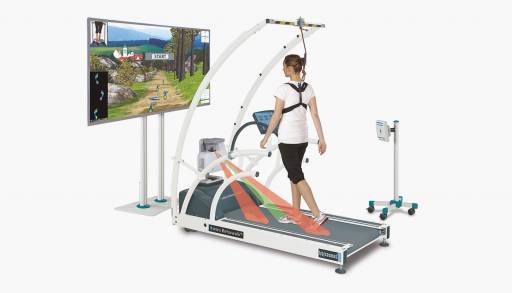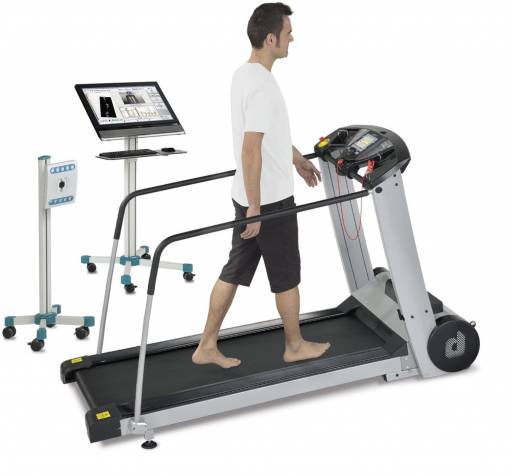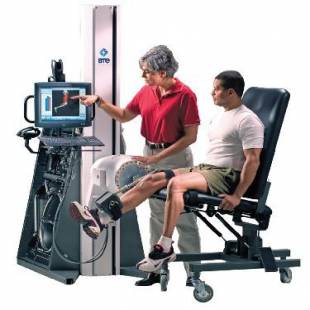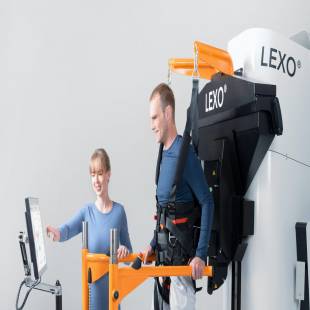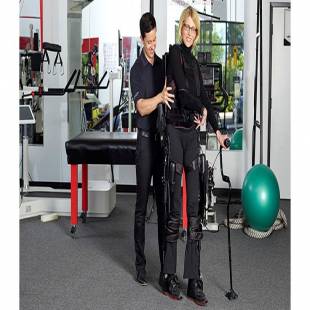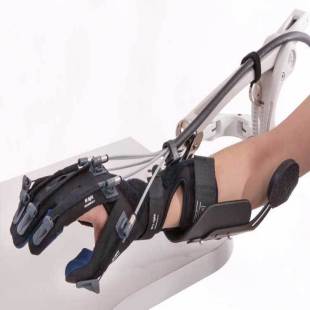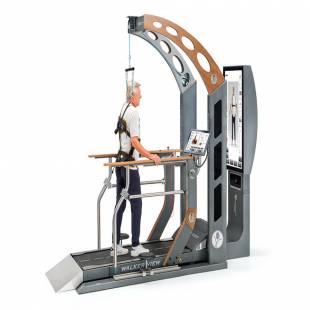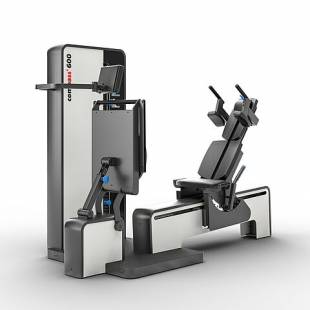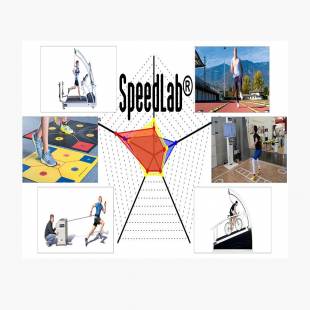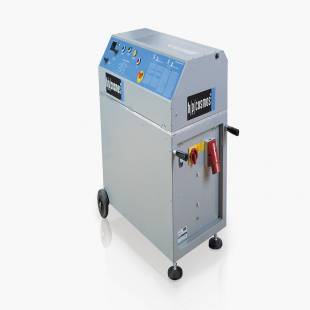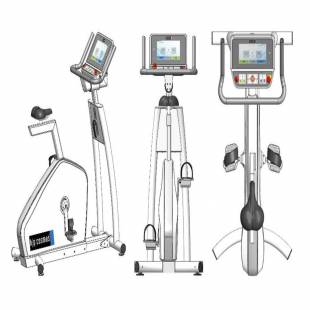Rehawalk - Gait Analysis
The zebris Rehawalk® system is designed for the analysis and treatment of gait disorders in neurologic, orthopaedic or geriatric rehabilitation.
The technological possibilities of RehaWalk® offer a complete adaptation to the patient's needs: from patients in wheelchairs over those with reduced mobility to the ones being capable of walking – the components can be adjusted to any application orientating themselves at the therapist. RehaWalk® thus is positioned between the robot-assisted locomotion therapy and the manual gait therapy.
In addition to a treadmill, Rehawalk® includes a unit for adaptive visual cueing through the projection of gait patterns on the treating surface. Virtual feedback training happens simultaneously with the help of a large monitor mounted in front of the treadmill.
Benefits of the RehaWalk® concept at a glance:
- Integrated pressure sensor matrix: The treadmills can be equipped with arm support and a safety arch. Underneath the belt, a pressure sensor matrix is installed featuring several thousand calibrated, capacitive pressure sensors. The belt movement is compensated such that stable gait and roll-off parameters can be analyzed.
- balance analysis, balance training, visual stimulation: A module for stance and balance analysis as well as balance training is optionally available.
- Supports therapists, doctors, coaches, and podiatrists in gait analysis and therapy
- Possible fields of application: rehabilitation torn ligaments, bone fracture, muscular injuries
- Trains cognition, coordination, postural control, and sensorimotor functions for improved fall prevention and daily life
- Automation of the gait through a high number of step repetitions
- Possibility to support and correct the gait through intuitive software suite FDM
- Gait analysis through time-synchronous video recording and pressure distribution measurement
- Gait training through visual and acoustic cueing as well as a virtual feedback
- Dual task training in virtual surroundings with coordinative and cognitive tasks
- Weight relief through optional arm supports and un-weighting system
- Preventing the patient from falling during training through safety
With the treadmill systems the following additional possibilities arise:
- Automation of the aisle through a high number of step repetitions
- gait training through virtual feedback
- Dual-task training in a virtual environment with coordinative and cognitive tasks
- Weight relief through optional armrests
- Protection of the patient during the training with crash bars

